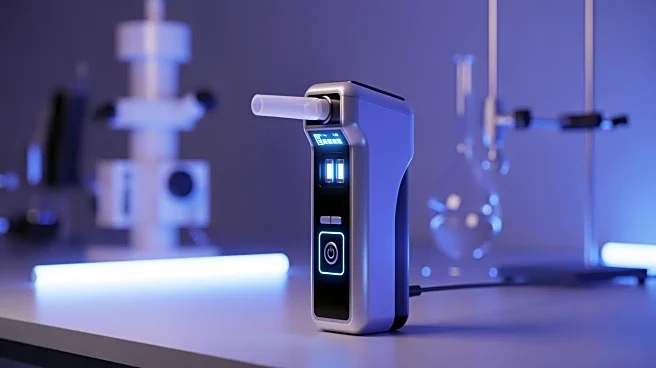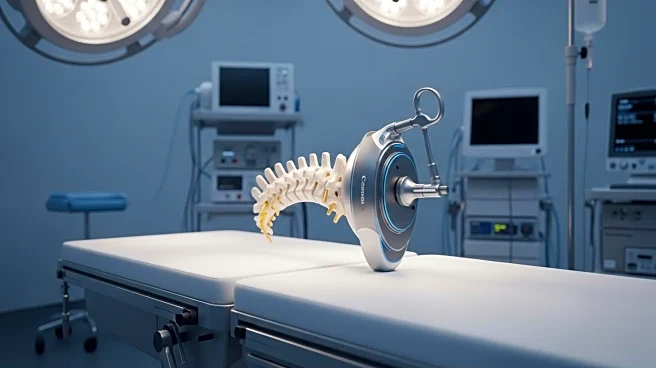What's Happening?
Researchers from Jahangirnagar University in Bangladesh, in collaboration with institutions in the U.S., have developed a new breath test for early lung cancer detection. The study, published in Scientific Reports, details the use of aluminum-derived
nanotube sensors to analyze volatile organic compound biomarkers such as acetaldehyde, aniline, and isoprene. The research indicates that aluminum nitride nanotubes are particularly effective, showing a 30% higher efficacy in adsorbing biomarkers compared to aluminum phosphide sensors. This innovative approach aims to provide a non-invasive, rapid, and cost-effective alternative to traditional diagnostic tools like CT scans and biopsies, which are often invasive and costly.
Why It's Important?
The development of this breath test is significant as it offers a potential breakthrough in lung cancer diagnostics, which could have substantial implications for healthcare in the U.S. Current diagnostic methods expose patients to radiation and can result in false positives, making them less ideal. The breath test's non-invasive nature and cost-effectiveness could lead to earlier detection and treatment, potentially saving lives and reducing healthcare costs. The involvement of U.S. institutions in the research highlights the global collaboration in advancing medical technology, which could accelerate the adoption of such innovative diagnostic tools in the U.S. market.
What's Next?
Further studies are needed to validate the efficacy of the breath test in clinical settings. If successful, this technology could be integrated into routine screenings, revolutionizing lung cancer diagnostics. U.S.-based companies like Breath Diagnostics are already exploring similar technologies, indicating a growing interest in breath analysis for disease detection. The potential commercialization of these tests could lead to widespread availability, offering a safer and more efficient option for early lung cancer detection.
Beyond the Headlines
The development of breath-based diagnostics could pave the way for detecting other diseases, leveraging advancements in analytical chemistry and nano-sensing technologies. This approach aligns with the broader trend towards personalized medicine and non-invasive diagnostic methods, which are increasingly favored for their patient-friendly nature and potential to improve healthcare outcomes.













